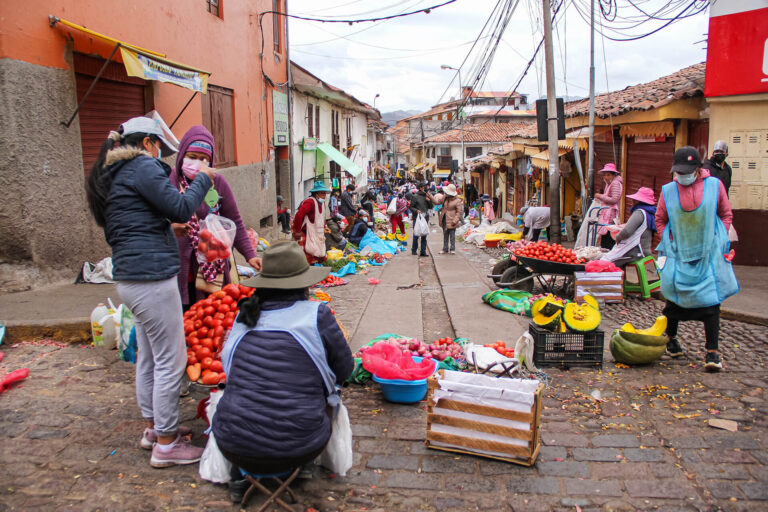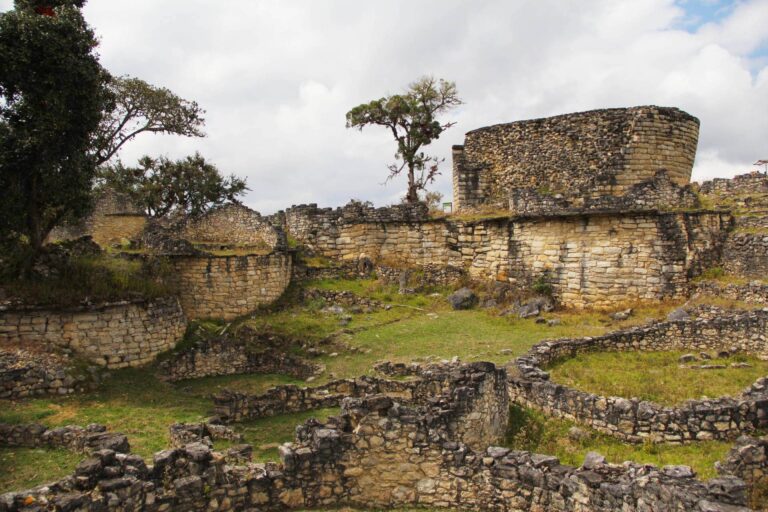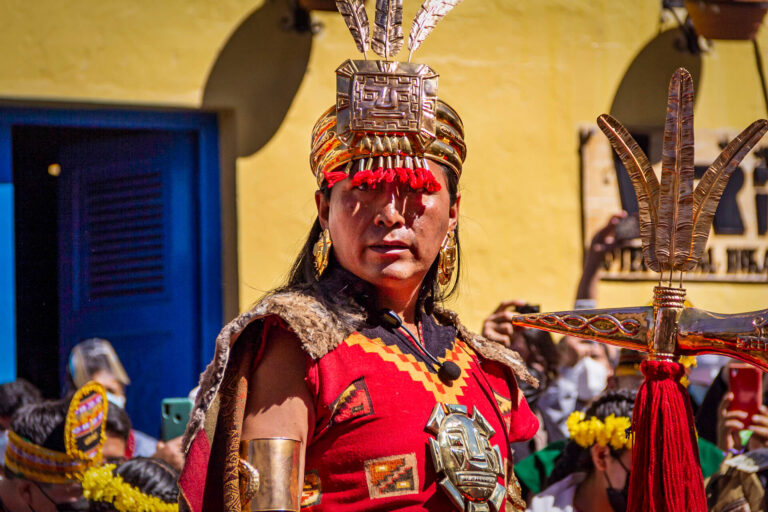Iquitos is the capital of the Peruvian Amazon and is located along the Amazon river. It is the largest city in the world that cannot be reached by road and that’s why it’s one of the world’s most extreme towns on the planet. The city is situated in the north of Peru in Loreto region with 400,000 people.
History of Iquitos
Iquitos was founded by the Jesuit missionaries in 1757 and named after the Iquitu Indians. In 1864 the first steamships began to arrive at Iquitos village which is the official date of the founding of Iquitos. These ships opened up access routes for trade and the beginning of the rubber boom. The rubber boom was the reason why a small village became the most important port in the region. In 1905 electricity was installed, a water system, and a wireless telegraph link to Lima. Thanks to the Spanish, Germans, the English the city was known as the city of wealth and luxury and some of the robber barons used to send their laundry to Europe to be washed. The population of the city was already around 30,000 people. When the rubber boom crashed in 1912 the entrepreneurs quickly abandoned the city and left just the luxury buildings. Some of them are standing today and some of them are falling apart.
1. Plaza de Armas
Perhaps every main square in Peru, no matter if it is a big city or small village, it is called Plaza de Armas. It means Weapons Square, but a better translation would be Parade Square. The main square is the busiest spot in the city (not counting the markets). Part of the plaza is a quite big park with palm trees and benches built around it. In the middle is an Obelisk of the Heroes which is dedicated to soldiers from the Loreto region who died in the War of the Pacific.
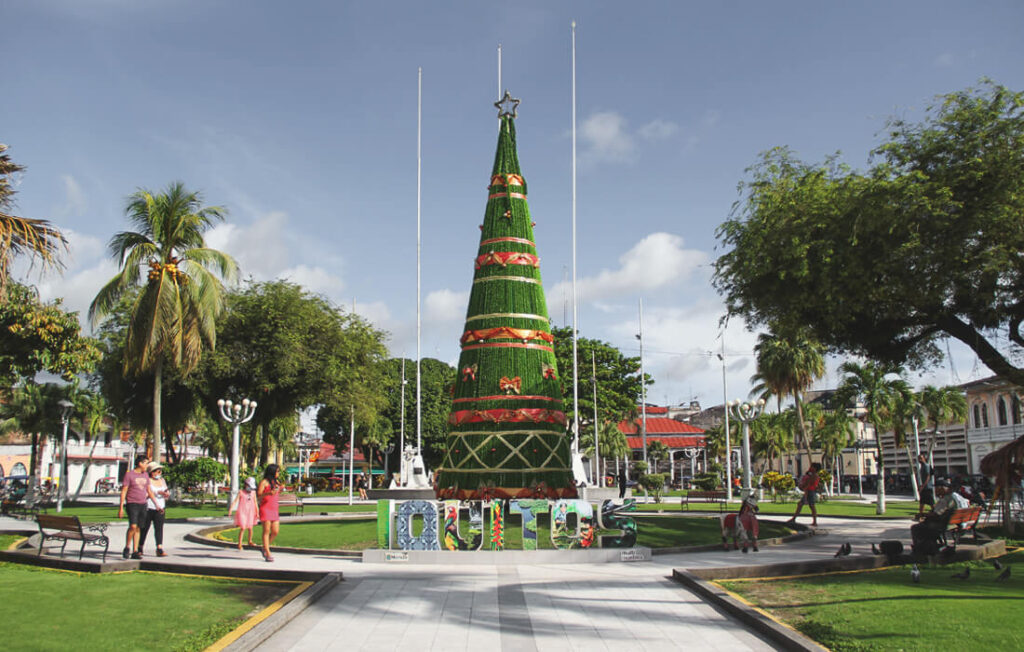
2. The Iron House (Casa de Fierro)
The house was designed by Gustav Eiffel and built during the rubber boom at the end of the 19th century. This house was brought from the International Paris Exposition and rebuilt in 1890. It is considered to be the first prefab house in America. Its walls and balcony were constructed with iron plates. Some people say it was brought to Iquitos accidentally and some that on purpose. Today, the 2nd floor is a unique-looking restaurant and it’s really worth getting a drink on their terrace. The building is right on Plaza de Armas.

Opening hours: 12 AM – 8:30 (during the pandemic)
Location: Plaza de Armas
3. Casa Morey
This national monument dates back to 1913 and it is a perfect reminder of the rubber boom era in the Peruvian Amazon. It’s worth seeing its magnificent interior that was been restored. Today, it works as a hotel and the prices for one night start at $70, but if you don’t want to spend that money, they will let you just walk inside the hotel.
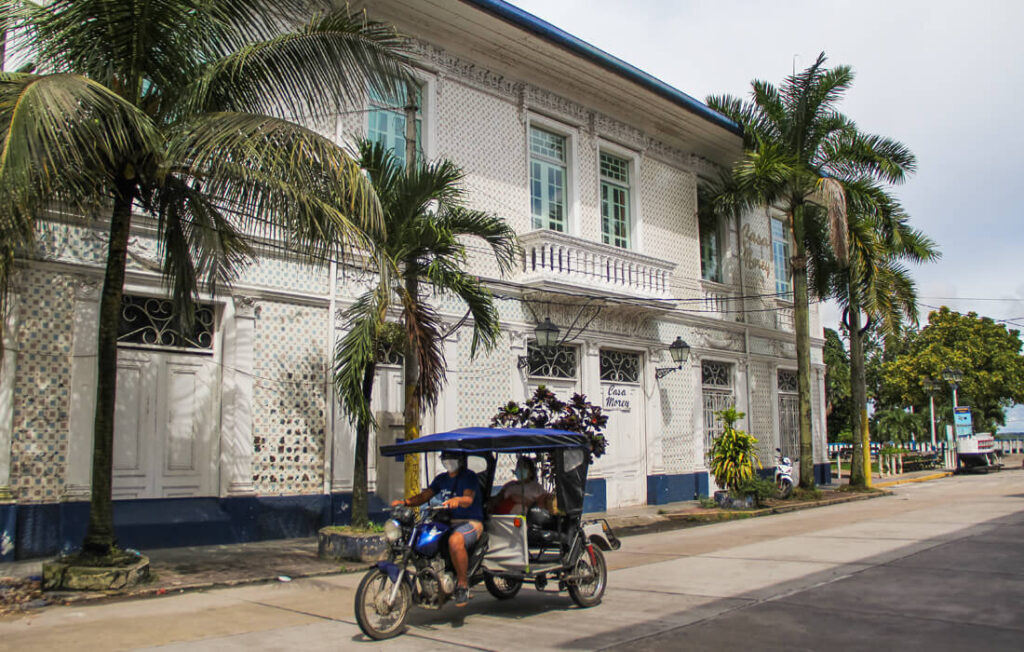
Location: Plazuela Ramon Castilla
4. Ayapua Steamship
You can find this ship in Plaza Ramón Castilla and even though the ship is quite small, you can easily spend 1-2 hours there. The ship was towed from Germany and today shows a really interesting history about the rubber boom in the late 19th and early 20th Centuries. The ship is a restored rubber-boom vessel and still sits on the river. There is a short documentary from where you can get a bit of the feeling of how the city looked like during the rubber boom. You can also watch a one-hour PBS documentary from the present or a two-hour Werner Herzog movie Fitzccaraldo, filmed in Iquitos.
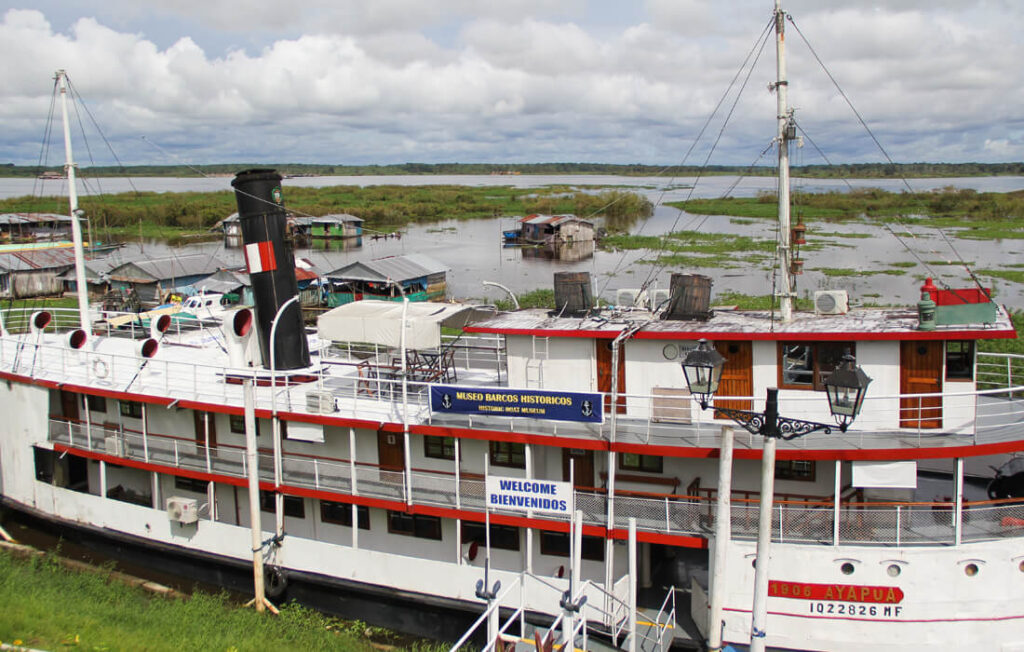
Entrance: 10 sol
Opening hours: 8 am – 8 pm
Location: in front of Casa Moray Hotel
Time: 15min – 2 hours
5. Indigenous Culture Museum Amazonas
This museum shows around 30 Amazonian cultures mostly from the Peruvian Amazon. It focuses on the ethnography of Amazon tribes and you will see everything they are using including clothes, tools, masks, or hunting weapons. Unfortunately, the museum has been closed due to the pandemic.

Entrance: 10 sol
Opening hours: 10 am – 7 pm
Location: Malecon Tarapata
Time: 15min – 2 hour
6. Ethnographic Museum
The time I went to this museum (January 2021) was open just the hall. There is a guy who explains everything and guides you through it. Around the typical Spanish baroque courtyard are statues of several tribes in the life-size. The excursion was short and was just about the tribes. Usually, there are many more things to see, but they were closing the museum and this was the last part that was opened. Now, the museum is currently closed because of the reconstruction and it will probably remain closed during the pandemic.

Entrance: voluntary
Location: Malecon Tarapata
Time: 20min
7. Centro Artesanal Anaconda
This market is a hidden gem. You can find it right on the Boulevard Joaquin Abensur and it stands on stilts. It’s quite small, but they have nice souvenirs and if you don’t want to spend time getting to a bigger Artesanial Market, this is a good option.

Opening hours: 8 am – 10 pm
Location: Boulevard Joaquin Abensur
Time: 15 min
8. Belén
The interesting thing about this neighborhood is that it is composed mainly of stilt houses or float and that’s why it’s called Venice of Amazon. It’s quite a popular tourist spot, but some parts are dangerous, too. It sits on the Itaya river and around 65 000 people live there in extreme poverty without electricity, water, or sanitation.
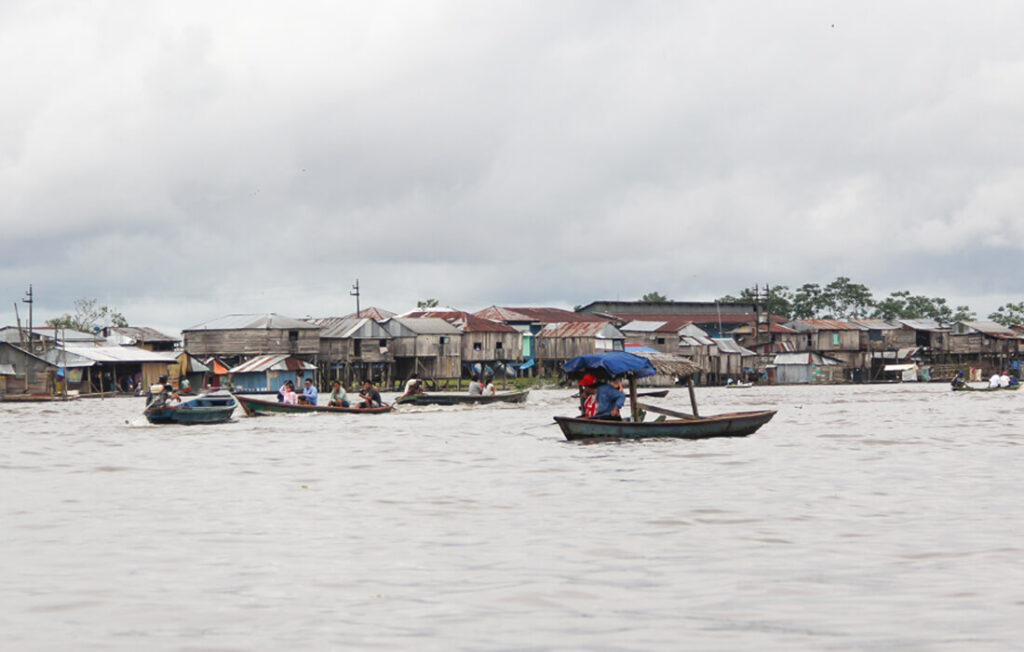
9. Belén Market
This market is the biggest and the most popular in the city. You can take a motocarro from the main square or walk there. On the first floor, they have a lot of raw meat, vegetables, and fruits, but the second floor is more interesting. You can find special drinks made from roots from the jungle, parts of the animals, like an alligator’s head, or some ritual objects. If you go to the Belen district you better be careful. Especially around the market is not safe, there are many thieves and better if you go in a group.
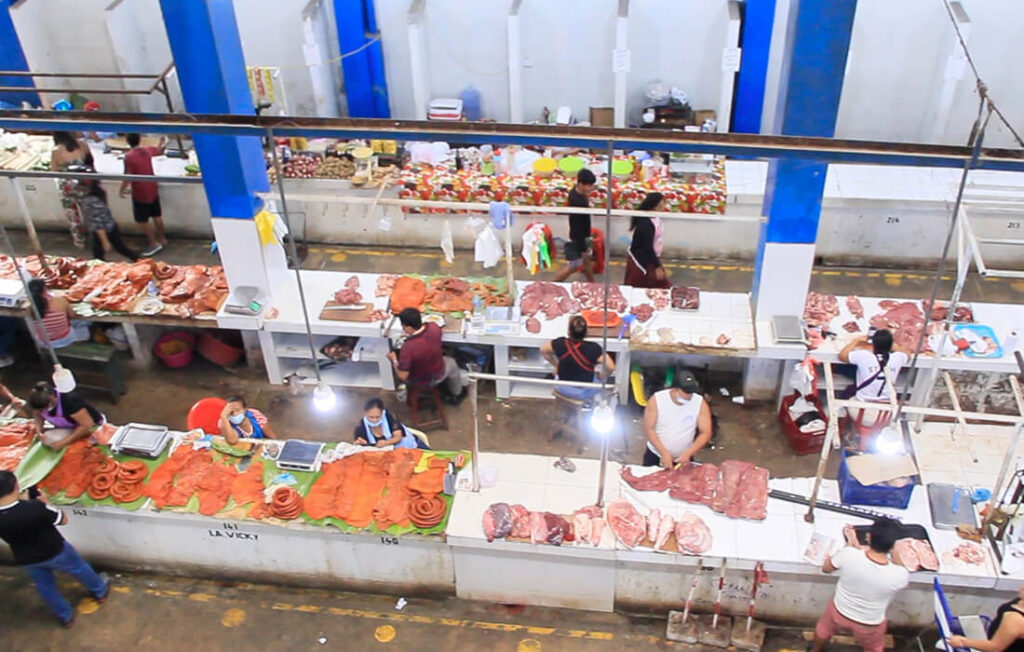
Opening hours: 6 am – 12 pm
Location: Ramirez Hurtado
Time: 30 min
10. Nanay Market
If you want to try a delicious alligator, piranhas, turtle’s eggs, snails from the jungle, or Suri (yes, these fat worms and you can choose wheatear you want them grilled, cooked, or raw), the Nanay Market is the best option. You should also try typical food from the jungle, Tacacho con Cecina. Don’t forget to try a Camu Camu drink made from Amazonian fruit.
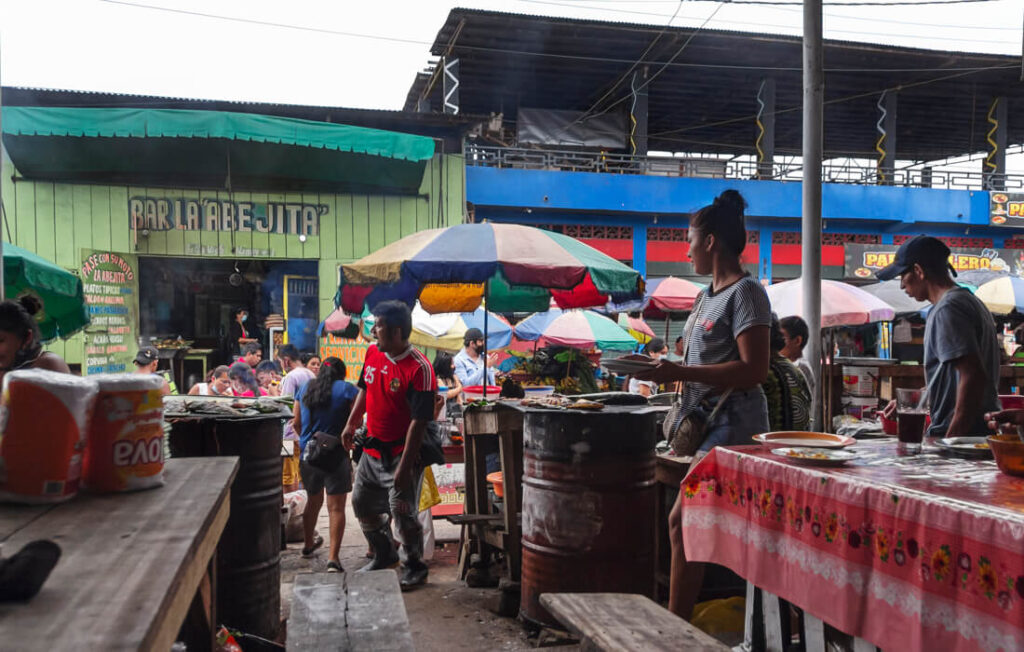
Opening hours: 4 am – 12 pm
Location: Puerto Bellavista Nanay
Time: 15min – 1 hour

